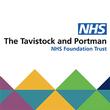Photographer
If you love taking photos and have an eye for a picture, you can put your photography skills to use in a variety of areas from advertising to social events
Photographers create visual images for an exceptional range of creative, technical and documentary purposes.
As a professional photographer, you'll usually work to a brief set by the client or employer.
Examples of content you could work on include wedding, family and baby, fashion, food, architecture, and landscape photography.
A large proportion of professional photographers are self-employed. You could also find work with a variety of employers, including creative businesses, publishers and photographic agencies, or in the education and public sectors.
Types of photographer
You'll usually specialise in one area of photography, such as:
- advertising
- corporate
- editorial
- fashion
- fine art
- social photography - also known as general practice, which includes weddings, commercial and portraiture photography.
See what becoming a specialist, such as a press photographer or medical illustrator, involves.
Responsibilities
Tasks vary according to the specialism you choose, but generally you'll:
- work with clients to discuss the images they require and how they want to use them
- seek out appropriate photographic subjects and opportunities
- carry out research and preparation for a shoot
- work in different locations and circumstances to get the right image
- use an extensive range of technical equipment, including cameras, lenses, lighting and specialist software
- communicate with photographic subjects to put them at ease, encourage them and direct them
- arrange still life objects, products, scenes, props and backgrounds
- liaise with other professionals, including graphic designers, writers, gallery managers, picture researchers, commissioning editors and art directors
- manage the processing and use of images, discuss technical problems, check for quality and deal with clients' concerns
- prepare proofs for approval
- compile finished products for sale, such as albums and framed prints
- understand traditional film and digital photography and keep up to date with industry trends, developments and new techniques
- develop software expertise to digitally enhance images by, for example, changing emphasis, cropping pictures, correcting minor faults or moving objects around
- manage the business aspects of the work, including administration, marketing, scheduling work, invoicing, basic accounting and website maintenance
- develop a good portfolio, build a network of contacts and achieve a reputation for quality and reliability in order to secure future assignments.
As a graduate, you may start out as a photographer's assistant, working mainly on routine administration and helping out around the studio.
Salary
As with other creative professions, salaries vary widely. As a freelance photographer, your earnings are linked to what you can charge and how much work you can secure. For this reason, income is likely to vary from year to year.
- Many entrants to the profession start as assistants, where salaries can be set at the national minimum wage.
- In full-time employment, early career salaries are typically between £16,000 and £22,000.
- Salaries can increase to anywhere from £25,000 to £65,000. The top end of the scale is typically for those who have a strong reputation and are highly sought-after, which takes years of experience.
Freelance and self-employed photographers often supplement their income with other related activities, such as giving photography lessons.
Income figures are intended as a guide only.
Working hours
Hours can be long and unpredictable and may be led by demand. For example, wedding photography will be at its busiest in the peak spring/summer wedding season and sports photography will require you to work weekends and evenings to cover fixtures and events.
Freelance photographers may have periods of working at maximum capacity followed by times when there is little or no work.
What to expect
- Working conditions vary depending on your assignment and can involve all weather conditions, remote locations or cramped studios. In certain fields of photography, such as documentary, work may also be dangerous, particularly when on assignment in war zones or unstable countries.
- You may need a reasonable degree of fitness for some areas of work, such as sports photography - which involves the use of bulky and heavy telephoto lenses and equipment.
- Work for some areas of photography, like fashion, may be concentrated in London and a few other large cities. Corporate and social photography work is spread across the country.
- Job security is not high, especially in the early days when you still need to establish your reputation and a solid client base.
- Travel is an integral part of many specialist photographers' lives and may include travel within the UK and overseas.
Qualifications
You can become a photographer without a degree, but in many instances having a degree or equivalent professional qualification is an advantage.
You could study for a degree in the following relevant subjects:
- art and design
- digital imaging
- fine art
- graphics
- media studies
- photography.
The content of photography courses varies considerably. Some have a strong emphasis on fine art and the study of photography as an artistic endeavour, whereas others have a more commercial focus and cover managing a business, professional ethics and marketing.
Digital imaging and other technological developments now form a significant part of many courses. Those that offer work placements and promote contact with industry can be particularly useful in helping you to secure future job prospects.
A postgraduate qualification is not necessary, although entry to the more competitive specialist areas, such as fashion, advertising and photojournalism, can be more challenging so a higher degree may be helpful.
Search postgraduate courses in photography.
Skills
You'll need to show:
- excellent technical skills, using digital and non-digital cameras and industry-standard software such as Photoshop
- creativity and an eye for a picture
- personality, perseverance, patience and dedication when working on projects and briefs
- strength in working under pressure, juggling workloads and meeting deadlines
- the ability to work both independently and in teams, building rapport with clients, colleagues and other businesses.
Advertisement
Work experience
When applying for photography work, you'll need a professional and impressive portfolio, which could be online, a traditional 'book' or on a CD or memory stick. It can contain tear sheets, if available. Whichever format you choose, your portfolio must be:
- relevant to the chosen area
- well-presented
- constantly updated.
You'll therefore need to gain significant work experience to build this up. Volunteering, work shadowing and project work with photographers or relevant employers are great ways of gaining experience and skills, as well as making contacts. You should take any opportunity to have your work published.
Joining photographic societies, visiting exhibitions and galleries, looking at photographs in books and magazines and finding out as much as possible about any specific fields of interest will all be useful.
You can gain Association of Photographers (AOP) Student membership to access to a network of students, assistants, photographers and agents. The AOP also runs student awards, where you can showcase your work. Explore the benefits of joining at AOP - Membership.
Find out more about the different kinds of work experience and internships that are available.
Employers
Press and medical photography are two of the main fields of employment for photographers but other organisations also offer permanent work:
- The police employs forensic photographers to take 'scene of crime' and forensic photographs. This work may incorporate videography and is not for the squeamish. Further details are available from individual police forces. The Ministry of Defence (MoD) also employs qualified photographers.
- Some museums have permanent photographers who catalogue exhibits and contribute to educational materials.
- High street photographers and wedding/social photographers may take on trainees and assistants.
- Commercial studios, which are a significant employer in the industry, are based mainly in London, but there are a few in other large cities.
- Many large organisations, such as businesses, universities, local authorities and charities, employ staff photographers, who may also be involved in audiovisual or marketing work. There is a low level of staff turnover in these types of posts, so vacancies appear infrequently.
- Cruise liners, holiday companies and theme parks employ photographers to provide a social photography service. Work is usually offered on a short-term contract and recruitment is generally handled through an agency.
- Although magazines mainly commission freelance photographers, some also employ permanent staff photographers.
In all other work, whether you specialise in advertising, aerial, architectural, corporate, documentary, editorial, fashion, fine art, food, portraiture, scientific and technical, sport, sub-aqua or wildlife photography, you're likely to work for yourself - either as a freelancer, running a business or in a partnership.
As a freelancer, you can use a variety of means to generate work. Self-promotion and having a good contact network are key, but you could also use a photographic agent to source opportunities.
An increasingly influential market within the industry is the growing number of picture libraries and stock agencies. Further details are available from the British Association of Picture Libraries and Agencies (BAPLA).
Look for job vacancies at:
Many vacancies in this sector are never advertised, so using speculative approaches and your contacts is essential. Useful resources for this purpose include:
Professional development
In a profession where there's so much self-employment and freelance work, it's not surprising that training is largely on the job and self-directed.
Academic courses often contain a substantial practical element and this is a useful starting point. Numerous part-time courses are run by local colleges, including GCSE, AS and A-level courses, City and Guilds qualifications, diplomas and non-assessed courses.
Discussions, seminars, online exhibitions and workshops are offered by the AOP.
The Royal Photographic Society offers a range of qualifications and certified courses. You can become a Licentiate (LRPS), Associate (ARPS), and Fellowship (FRPS) member of the society.
The British Institute of Professional Photography (BIPP) also offers three levels of qualifications.
If you're thinking of setting up your own photography business, it's a good idea to undertake business training courses - especially those that cover marketing and promotion, copyright and contracts, and basic bookkeeping and financial management.
Career prospects
There are many different types of photography, so there's no standard, structured career development route.
It's likely you will begin as a studio assistant or assistant photographer and you'll be expected to learn by watching and to gain experience over time.
Membership with the AOP can help with career progression as you can promote yourself through its 'Find a Photographer' search facility. The AOP also offers a mentoring scheme, workshops and awards.
You could also work towards professional qualifications with the Master Photographers Association (MPA). These are offered at three levels: Licentiate, Associate and Fellowship. Find out more at MPA - Qualifications.
You'll be able to learn a great deal from the photographer(s) employing you, and will have the opportunity to develop a portfolio and to meet other photographers and stylists. You may also be able to borrow equipment or use studio space to develop your own work at weekends or during quiet times.
If you choose to specialise, the best way forward is to develop a range of skills and maintain a flexible approach. You can move between specialist areas if you have the right portfolio.
Entering competitions, trying to get your work into galleries and, above all, networking, will also help to boost your reputation and expand your client base.
Further into your career you could become a studio manager in a large photographic studio. Other options include becoming an agent, where you'll promote and sell the work of other photographers, or part-time teaching or lecturing.
Alternative careers
Related jobs and courses





